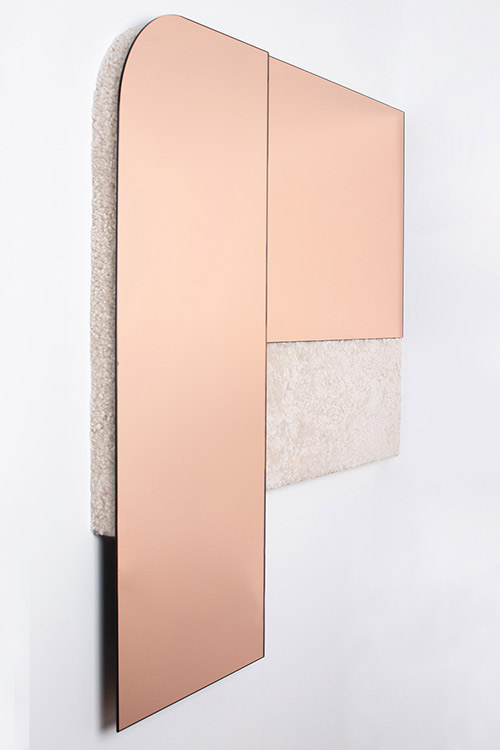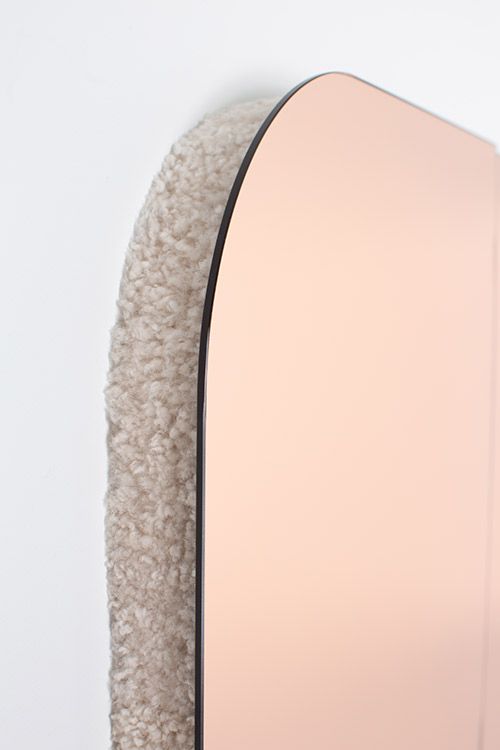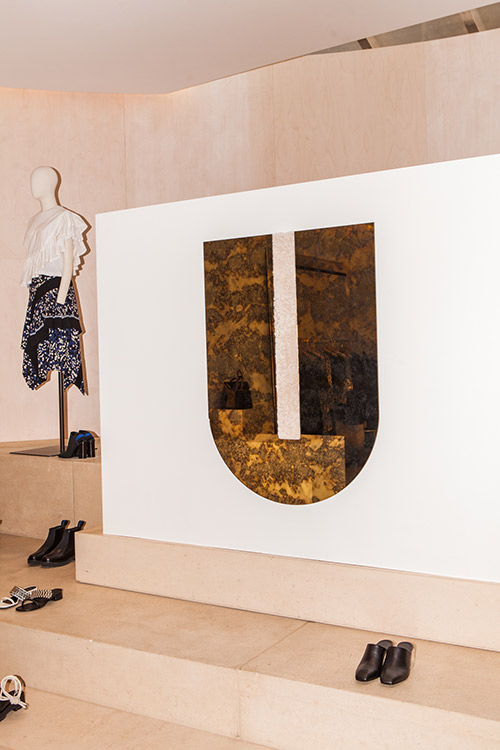
Ben & Aja Blanc on Meret Compositions
Since founding their eponymous studio, Ben and Aja Blanc have built a reputation for outstanding design work that synergizes the purity of minimalism with the humanistic qualities of craftsmanship. The studio’s latest foray, titled Meret Compositions, consists of an ongoing collection of works inspired by the interaction of the designers with artists and their historical milieu. One-of-a-kind, each piece will be released exclusively over several months. The duo, who are injecting a new vision of production into American design, sat down to discuss Meret Compositions.


Meret Composition 3.
The result are objects that are more urgent, more loose and more experimental in hand worked qualities, while at the same time, rooted in an attention to design detail that is the foundation of our studio practice.
1. Can you talk us through the concept of the Meret editions?
With the Meret Compositions, we are looking for a way to introduce more experimentation and freedom of form. Often in design ongoing production is the norm and we realized that by offering these compositions as one-of-a-kind pieces, we are freeing ourselves from the formal constraints of having to repeat production and can focus on the design and creation of the object as its ideal self. This is providing us a freedom in our arrangement of texture, surface, material and form. The results are objects that are more urgent, more loose and more experimental in hand worked qualities, while at the same time rooted in an attention to detail that is the foundation of our studio practice. Offering the one of a kind Meret Compositions as an ongoing project for the next several years allows us to highlight the series as a design dialogue that builds upon itself in formal language. It is allowing us to breakdown and reconsider what a mirror is and what it isn't. We often hear from our clients what they find most successful is that our mirrors maintain both a functional quality while also providing a conceptual "art" based entry point. For us seeking the limits of this juxtaposition from a design perspective is thrilling.
2. Juxtaposition feels central to your work. How is this interwoven within this new collection?
The use of mirror as a material in our work has become a signature of our studio and we love working with it. The challenge with mirror as a material is its fragility and coldness. While mirror aesthetically expresses a feeling of containment and rigidity, at the same time it contains the concepts of light, reflection - expansiveness. Juxtaposition feels inherent in the material, which is exciting to us because the concept of juxtaposing energies, forms, textures or forces are indeed central to our work. Aesthetic function is a term we use a lot in the studio to express this idea of using a material or form as the conceptual juxtaposing element. For example, using shearling along with the mirror serves a purpose of "visual warmth" not literal tactile warmth, but an aesthetic warming and softening of the overall composition. By pairing these dislike materials we are able to create a set of visual emotions that can be at once expansive, reflective, warm and organized. These contradictions provide the user, a moment of awareness - the moment a mirror is a mirror and not simply the reflection of a room.


Meret Composition 1 launched at 3.1 Philip Lim for New York Design Week 2018. Photography by Sean Santiago.
3. You reference historical movements within the pieces. Can you explain further?
The arrangement of forms and materials are to be seen as conversations between us (the designers) and art historical movements, moments in time and artists that we are most provoked by. Partnering the function of an object (in this case, the reflective nature of the mirror) with art historical references allows us to push the work further. We tend to use materials in our work that can easily rest on their own laurels - glass, mirror, stone, oak - these all have a classic enduring beauty - we see it as our job to work with these materials, their function and form to allow the materials to be perceived in new ways. This series is titled Meret Compositions in homage to Surrealist artist Meret Oppenheim who did this so well in her own work. We see the Meret mirrors as objects that do not seek to present themselves as tangible answers, but rather make visible an evolving design conversation over time.

Meret Composition 2. Photography by Stephanie Ewens.
 The Future Perfect
The Future Perfect